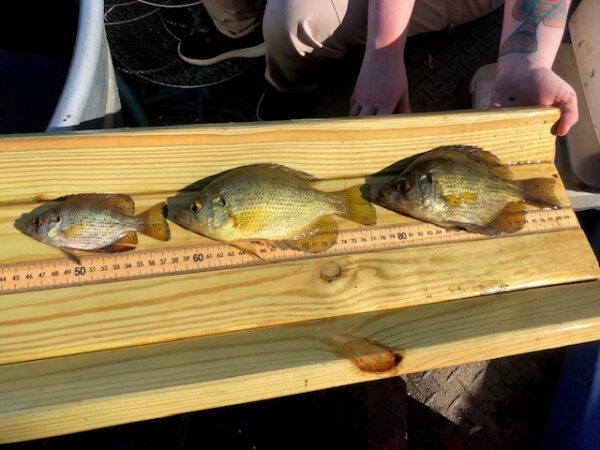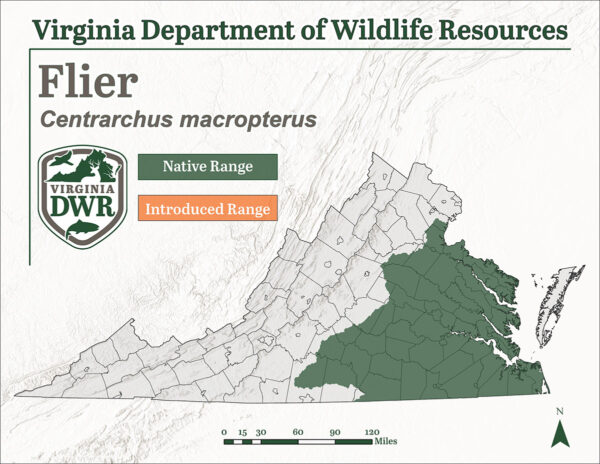Fact File
Scientific Name: Centrarchus macropterus
Classification: Fish, Order Perciformes, Family Centrarchidae
Size: Flier in Virginia grow slowly, and maximum length is about 10 inches
Life Span: Flier live for about 5 years in Virginia
Identifying Characteristics

DWR fisheries biologists collect fish community data throughout the Commonwealth. ©Photo by Scott Herrmann
- Deep-bodied, almost round in shape
- A dark vertical slash extends from the eye to the lower edge of cheek
- Spines are present on both the front dorsal and anal fin
- Colors can vary from yellow-green to silver-gold
- Black spots are present within some scales, and may appear as rows
- The second dorsal often has a prominent spot near the base
- Large, rounded anal fin
Diet
Insect larvae, small crustaceans, worms, small fishes and algae.
Habitat
Flier often reside in dark, tannic, acidic backwaters of coastal swamps, creeks, ponds and canals. Like other species endemic to Virginia’s swamps they thrive in areas with thick vegetative cover, and can survive in locations with minimal levels of dissolved oxygen.
Reproduction
Flier spawn in the spring. This can occur as early as February in Virginia, when water temperatures reach 55°F. Male Flier build the nests, and are territorial in defending nesting sites and their newly hatched young.
Last updated: July 18, 2024
The Virginia Department of Wildlife Resources Species Profile Database serves as a repository of information for Virginia’s fish and wildlife species. The database is managed and curated by the Wildlife Information and Environmental Services (WIES) program. Species profile data, distribution information, and photography is generated by the Virginia Department of Wildlife Resources, State and Federal agencies, Collection Permittees, and other trusted partners. This product is not suitable for legal, engineering, or surveying use. The Virginia Department of Wildlife Resources does not accept responsibility for any missing data, inaccuracies, or other errors which may exist. In accordance with the terms of service for this product, you agree to this disclaimer.




